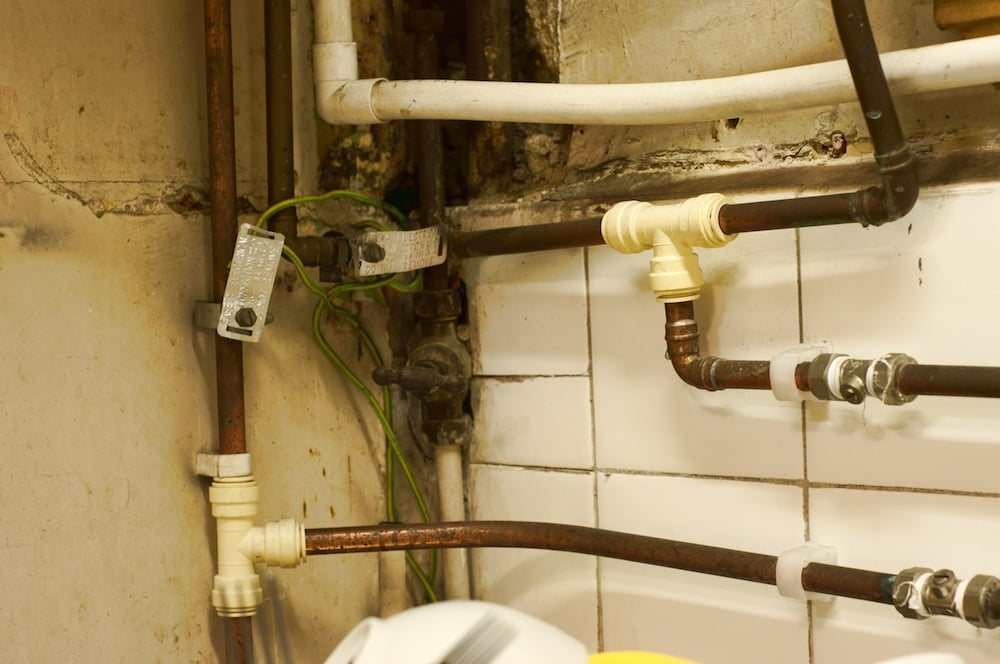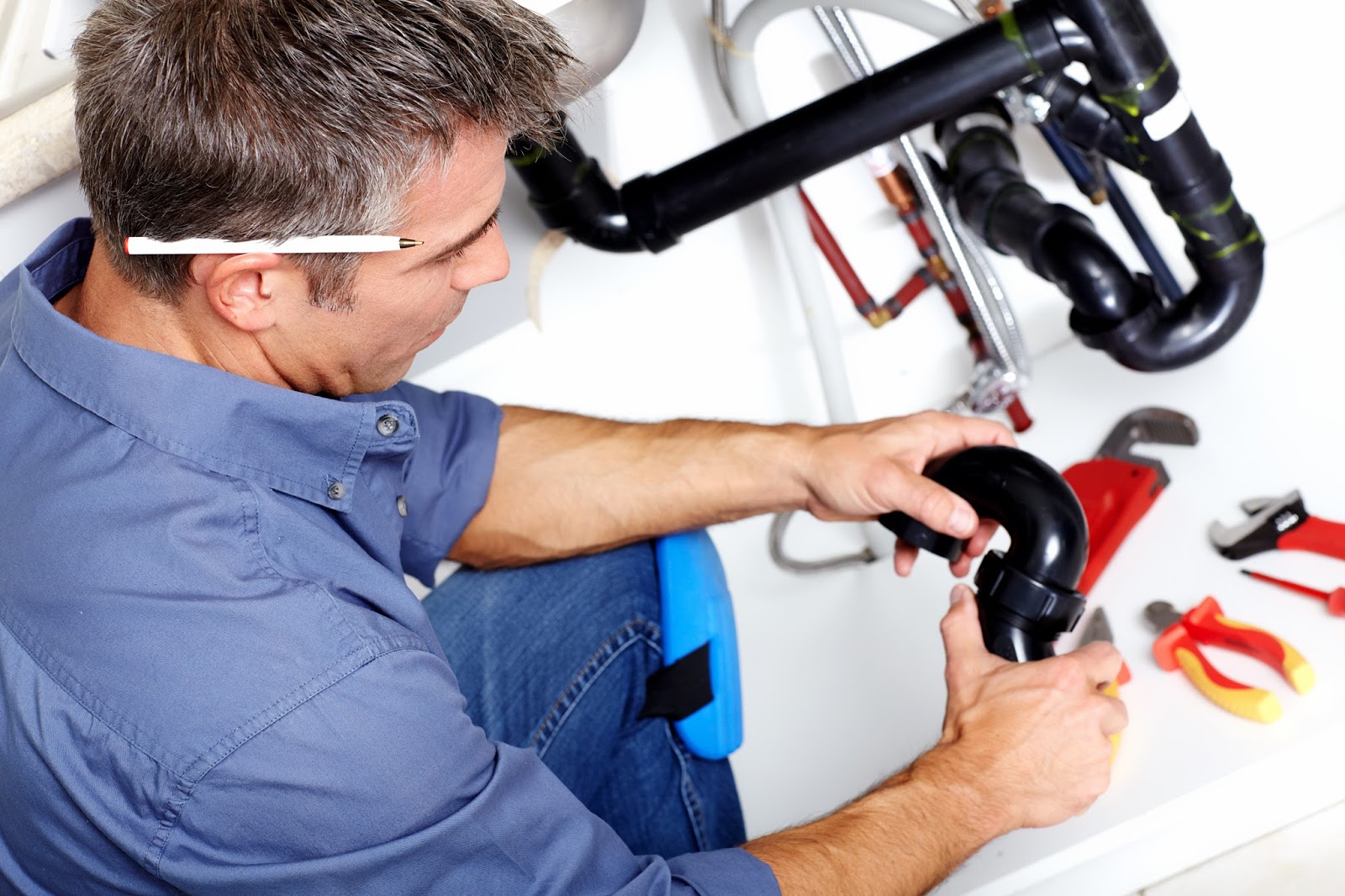Everybody is bound to have their own conception on the subject of Plumbing Problems In Old Homes.

Older homes often feature appeal, personality, and background, but they can additionally bring a host of plumbing concerns. Whether you're managing aging pipes, low tide pressure, or leakages, knowing how to resolve these typical troubles is important to keeping a safe and practical home. In this overview, we'll explore the common pipes challenges dealt with by older homes and give practical options to maintain your plumbing in top form.
Understanding Typical Pipes Issues
Aging Pipes
Among the most typical concerns in older homes is aging pipes. Relying on the era in which your home was developed, the pipelines might be made from products that have actually deteriorated in time, such as galvanized steel, cast iron, or perhaps lead. These products can corrode, come to be brittle, or develop leakages, bring about water damages and potential health hazards.
Water High Quality Testing
Older pipes can impact the top quality of your water. Conduct a water top quality test to check for pollutants such as lead, corrosion, or various other impurities that may be introduced by maturing pipelines.
Solutions for Usual Pipes Issues
Replacing Aging Pipes
If your home has old, degrading pipelines, take into consideration changing them with modern materials like copper or PEX. This can be a considerable financial investment, but it will certainly prevent future issues and enhance the security and integrity of your pipes system.
Fixing Low Water Pressure
To fix low tide pressure, start by cleaning or changing old fixtures and removing mineral buildup in the pipes. If the issue continues, it may be necessary to replace sections of corroded pipes.
Repairing and Replacing Leaking Pipes
For little leaks, you can utilize pipe clamps or epoxy putty as a momentary repair. Nevertheless, it's ideal to change dripping pipelines totally to stay clear of more damages.
Updating Components
Updating old components to contemporary, water-efficient designs can enhance your home's plumbing efficiency and reduce water consumption. Seek components with the WaterSense label for the best efficiency.
Managing Pipeline Deterioration
If your pipelines are rusted, replacing them with corrosion-resistant products like copper, PVC, or PEX is the most effective option. Regular evaluations and water quality upkeep can aid avoid even more corrosion.
Low Tide Pressure
If you're experiencing low water stress, maybe due to mineral deposits, deterioration inside the pipes, or old components that are no more working efficiently. This can be a significant trouble, especially in locations like showers and sinks.
Dripping Pipes
Leaks are one more frequent concern in older homes, typically caused by rusty or worn-out pipelines. Also little leaks can cause significant water damages, mold development, and enhanced water expenses otherwise dealt with promptly.
Out-of-date Fixtures
Obsolete plumbing components such as taps, toilets, and showerheads not only look old yet may also be less reliable, prone to leakages, or inappropriate with contemporary plumbing criteria.
Pipe Deterioration
Corrosion is a common problem in older pipelines, particularly those made from galvanized steel or actors iron. Rusty pipes can limit water flow, create discoloration, and at some point result in leakages or pipe ruptureds.
Assessing the Problem of Your Pipes
Checking Visible Pipes
Beginning by examining any kind of visible pipes in your home, such as those in basements, crawl spaces, or under sinks. Seek signs of rust, leakages, or rust, which can indicate underlying problems.
Checking for Leaks
Look for leaks by examining locations around taps, commodes, and under sinks. You can also monitor your water meter before and after a period of no water utilize to identify covert leaks.
When to Call an Expert
While some pipes problems can be handled with DIY services, there are times when it's finest to employ a specialist. If you're dealing with significant leaks, comprehensive rust, or are not sure concerning the problem of your pipelines, a licensed plumbing professional can provide expert assessment and repair work.
Preventive Maintenance Tips
Routine Evaluations
On a regular basis check your pipes system for indicators of deterioration. Capturing problems early can stop expensive repair services down the line.
Water Pressure Policy
Ensure your water pressure is within the recommended range to avoid stressing your pipelines and fixtures. A plumber can set up a pressure regulatory authority if needed.
Water High Quality Upkeep
Mount water filters or conditioners if your water high quality is poor. This can safeguard your pipelines and fixtures from damages brought on by difficult water or contaminants.
Proactive Pipeline Substitute
If your home has older pipelines, take into consideration proactive replacement prior to major issues arise. This can conserve you from emergency situation repair services and water damages.
Conclusion
Managing plumbing concerns in older homes calls for a mix of watchfulness, preventive upkeep, and prompt upgrades. By recognizing the usual obstacles and recognizing when to look for expert aid, you can guarantee your plumbing system remains functional and reputable for years to find.
Common Plumbing Issues in Older Homes and How to Fix Them
Owning an older home in Australia comes with its unique charm and a set of challenges, especially when it comes to plumbing. The Sunshine Coast has many older properties that can harbour plumbing problems that aren t just inconvenient but potentially costly. Here s a look at some common plumbing issues in older homes and expert advice on how to handle them.
Outdated Piping Materials
Many older homes were built with galvanised steel, cast iron, or even lead pipes, materials that are far from ideal by today s standards. Galvanised pipes are prone to corrosion and clogging, while lead pipes pose serious health risks.
How to Fix:
Replacing old pipes is a job for a professional. Upgrading to copper or PVC piping not only enhances water quality and flow but also increases the property s safety and value. If you suspect your home has outdated materials, a licensed plumber can conduct a thorough inspection and recommend the best course of action.
Corrosion and Pipe Degradation
Over time, exposure to water and minerals can cause pipes to corrode, leading to leaks, bursts, and water contamination. Corrosion is especially common in homes over 50 years old.
How to Fix:
Regular inspections can catch early signs of corrosion. If corrosion is found, the affected section of piping often needs to be replaced. For homes with extensive corrosion, a complete plumbing overhaul might be necessary. It s crucial to consult with a plumbing expert to understand the extent of the issue.
Tree Root Intrusion
Older neighbourhoods usually have mature trees whose roots can intrude into pipe lines, causing blockages or damage. This is particularly problematic for sewer lines, where roots seek out water sources.
How to Fix:
A plumber can use a specialised camera to inspect sewer lines for root intrusion. If roots are a problem, methods like root cutting or hydro-jetting can clear the obstruction. In severe cases, part of the pipe may need replacing. Consider root barriers around the piping to prevent future issues.
Inadequate Water Pressure
Low water pressure in older homes can be due to various factors, including corroded water lines, sediment build-up in pipes, or outdated fixtures.
How to Fix:
First, check if the low pressure is isolated to one area or throughout the house. Replacing old fixtures can sometimes resolve the issue. However, if the problem is more widespread, it might be due to sediment or corrosion. Flushing the system or replacing the affected pipes usually restores normal pressure. Again, a professional assessment is advisable.
Outdated Fixtures
Older homes often feature fixtures that are not only visually dated but functionally inefficient. This includes everything from toilets and taps to showerheads and washing machine hoses.
How to Fix:
Updating these fixtures can improve both water efficiency and the aesthetic appeal of your home. Modern fixtures are designed to conserve water, which can significantly reduce your water bill and lessen your environmental impact.
Conclusion
Maintaining the plumbing in an older home requires a proactive approach. Regular checks and updates are key to preserving these beautiful properties. If you re facing plumbing issues in your older home, it s best to call on experienced professionals like Green & Gold Plumbing & Gas. With the right expertise, even the most daunting plumbing problems can be resolved, ensuring that your home s character is maintained while its functionality is enhanced.
https://gandgplumbing.com.au/common-plumbing-issues-in-older-homes-and-how-to-fix-them/

Hopefully you enjoyed our excerpt on Common Plumbing Challenges In Old Buildings. Thanks for taking time to read our piece. Those who enjoyed our blog posting kindly be sure to pass it around. Bless you for your time. Revisit us soon.
Click Here
Comments on “Understanding Plumbing Challenges in Older Homes: Ways to Address Issues”